The Pinacoteca di Brera is one of Italy’s most important art galleries, with an especially impressive collection of paintings by Italian masters from the fourteenth to the twentieth century.
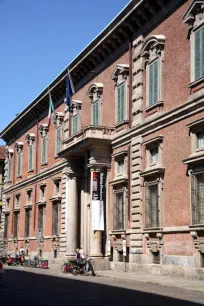
Palazzo di Brera
The Pinacoteca di Brera is housed in the Palazzo di Brera, a palace that was built at the end of the seventeenth century by the Jesuits at the site of a convent founded in the fourteenth century by the Humiliati, a religious order.
One year after the Humiliati were suppressed by a papal bull in 1571, the Jesuits took ownership of the convent and established a school, a library and an astronomical observatory at the site. They commissioned architect Francesco Maria Richini with the construction of a grand palazzo.
In 1773, almost two hundred years and several architects later, the building, now known as the Palazzo di Brera, was finally completed. The portal was added even later, in 1780. In the meantime the Jesuits had been evicted by empress Maria Theresa of Austria who handed the palazzo in 1773 to the Accademia di Belle Arti, a newly founded arts academy.
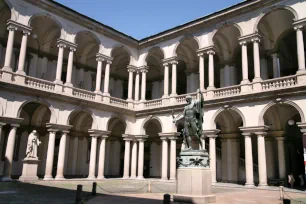
The palazzo was initially designed in the Baroque style, a style favored by the Jesuits, but at the end of the eighteenth century it was remodeled in the neoclassical style preferred by Maria Theresa.
The Palazzo Today
A portal flanked by stone columns leads to a rectangular inner courtyard enclosed by two arcaded stories. In the middle of the courtyard is a bronze statue of Napoleon. It was cast in 1809 by Antonio Canova, a Venetian sculptor, and shows the French emperor as Mars the Peacemaker. A number of others statues in the courtyard honor artists, scientists and patrons of the arts.
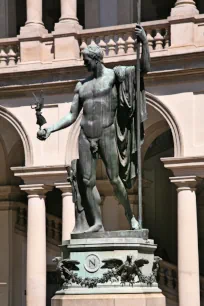
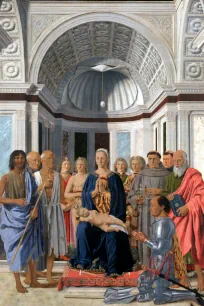
Several cultural institutions are housed in the Palazzo Brera, including a library, an observatory, a science academy, an art academy and the art gallery.
Accademia di Belle Arti
The collection of the art gallery started out small, with sketches and replica sculptures that students of the Brera Art Academy (Accademia di Belle Arti) could use as training material. That soon changed during the Napoleonic era, when the collection was significantly expanded with artwork confiscated from convents and churches.
In 1809, Napoleon founded the Pinacoteca di Brera which displayed its artwork in four rooms of the Palazzo di Brera. In 1882, after the unification of Italy, the pinacoteca was separated from the art academy and became a state gallery.
The Art Gallery
After Napoleon declared Milan capital of the Kingdom of Italy, the art gallery was endowed with works from across the territory, including masterpieces from artists such as Raphael and Caravaggio. An exchange with the Louvre in Paris also brought some Flemish masterpieces to the Brera Palace, with works from Rubens, Jordaens and Van Dyck. The collection continued to expand during the nineteenth and twentieth centuries thanks to numerous donations and acquisitions.
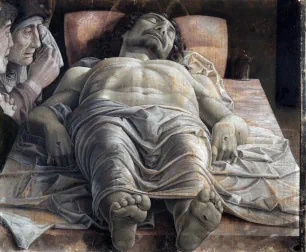
The works of art are displayed chronologically and span an era of more than six centuries. The majority of paintings are from Italian masters, with an especially large collection of Renaissance paintings from Lombardy and Veneto; the museum has the largest collection of Venetian art outside of Venice.
Some of the highlights in the museum are the ‘Virgin and Saints’ by Piero della Francesca, Raphael’s ‘Marriage of the Virgin’, Caravaggio’s ‘Supper at Emmaus’ and Mantegna’s ‘Lamentation over Dead Christ’.

